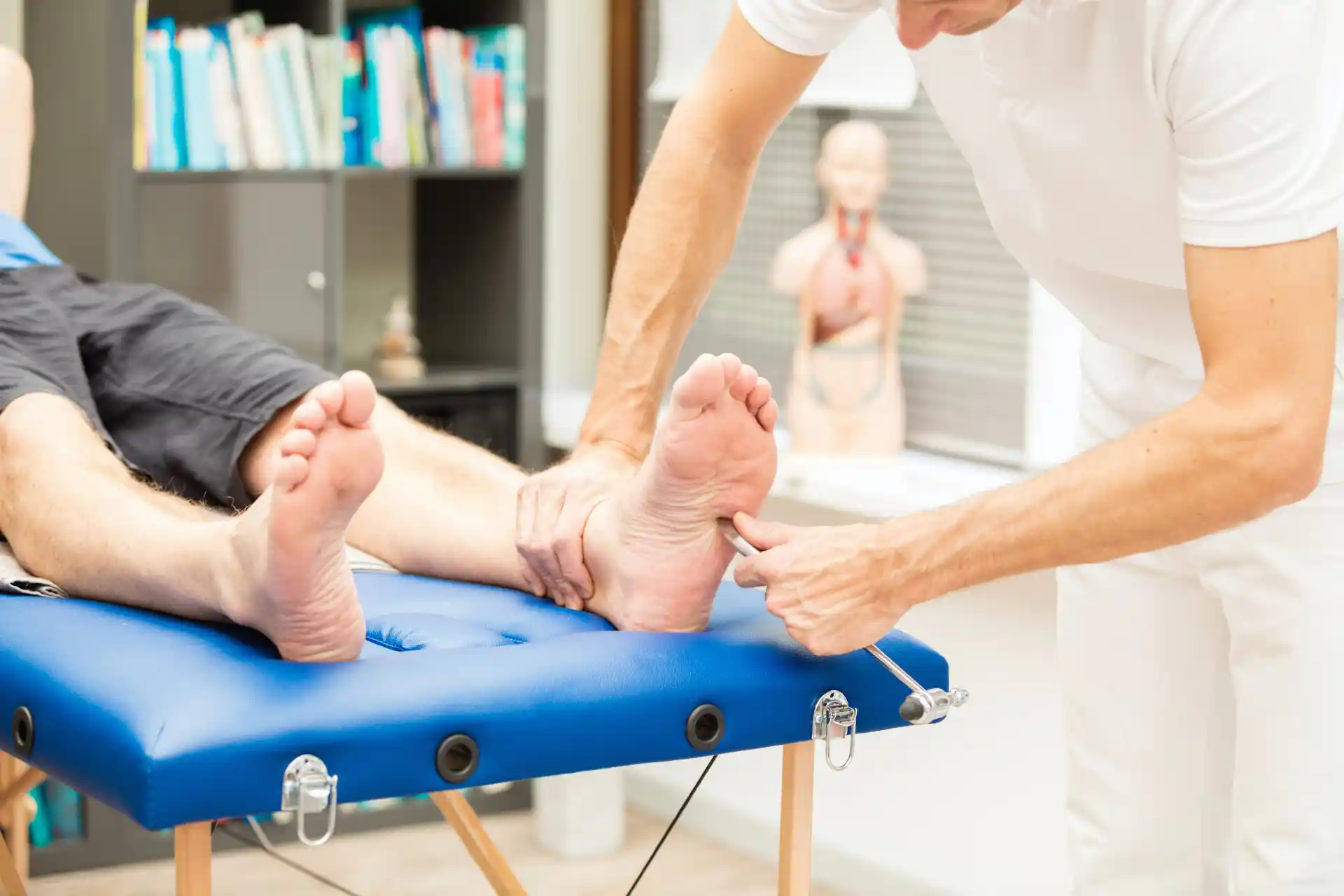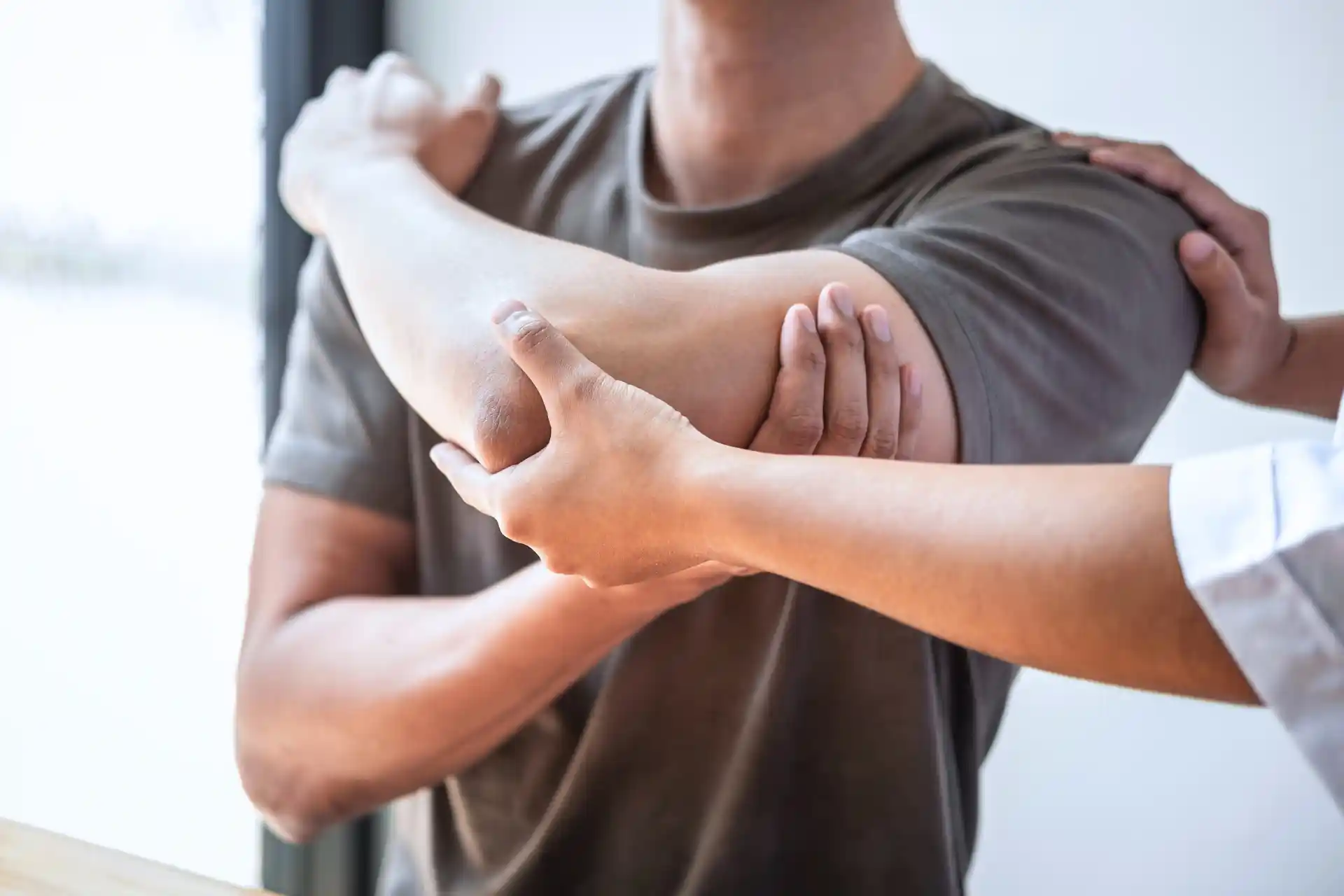Treating Achilles Tendonitis
When it comes to treating Achilles tendonitis, there are both non-surgical and surgical options available, depending on the severity and response to conservative treatments.
Non-Surgical Treatment Options
For mild to moderate cases of Achilles tendonitis, non-surgical treatments are often the first line of defense. These treatments aim to reduce pain, inflammation, and promote healing. Some of the non-surgical treatment options include:
- Rest: Taking a break from activities that aggravate the condition can help alleviate symptoms and prevent further damage.
- Ice: Applying ice packs or cold compresses to the affected area can help reduce pain and inflammation.
- Compression: Using compression bandages or wraps can provide support to the tendon and reduce swelling.
- Elevation: Elevating the leg can help reduce swelling and promote blood circulation.
- Supportive Shoes: Wearing shoes with proper arch support and cushioning can relieve stress on the Achilles tendon.
- Orthotics: Custom orthotic inserts can provide additional support and alignment to the foot and relieve strain on the tendon.
- Physical Therapy: Specific exercises and stretches prescribed by a physical therapist can help strengthen the tendon and improve flexibility.
- Extracorporeal Shock Wave Therapy (ESWT): This non-invasive treatment uses shock waves to stimulate healing and reduce pain.
For a more detailed understanding of the various nonsurgical treatment options, visit our article on Achilles tendinitis therapies.
Surgical Interventions
If non-surgical treatments fail to provide relief after a period of six months or if the Achilles tendon is severely damaged, surgical intervention may be necessary.
Some surgical options for Achilles tendonitis include:
- Debridement: This procedure involves removing damaged or degenerated tissue from the tendon to promote healing.
- Tendon Transfer: In cases where the Achilles tendon is severely damaged or ruptured, a nearby tendon may be used to replace or reinforce the damaged tendon.
- Lengthening Procedures: When the Achilles tendon is excessively tight and causing chronic pain, a surgical lengthening procedure may be performed to relieve tension and improve function.
It's important to note that surgical treatment is typically considered when non-surgical methods have been exhausted and the symptoms persist.
The decision to undergo surgery should be made in consultation with a qualified healthcare professional. By considering the severity of your condition and consulting with a healthcare professional, you can determine the most appropriate treatment approach for your Achilles tendonitis.
Medications for Achilles Tendonitis
When it comes to managing Achilles tendonitis, medications can play a role in relieving pain and reducing inflammation. Two common medication options for Achilles tendonitis include over-the-counter pain relievers and corticosteroid injections.
It's important to follow the recommended dosage instructions and consult with your healthcare provider if you have any underlying medical conditions or are taking other medications.
Over-the-Counter Pain Relievers
Over-the-counter pain relievers, such as ibuprofen or naproxen, can be helpful in alleviating pain and reducing inflammation associated with Achilles tendonitis. These nonsteroidal anti-inflammatory drugs (NSAIDs) work by blocking certain enzymes in the body that cause pain and inflammation (Mayo Clinic Health System).
Corticosteroid Injections
Corticosteroid injections have traditionally been used to treat various inflammatory conditions, but their use for Achilles tendonitis is controversial. While they can provide short-term pain relief, there are potential risks associated with corticosteroid injections for Achilles tendonitis.
These injections have been linked to an increased risk of Achilles tendon rupture (OrthoInfo). Research has shown that corticosteroid injections can result in decreased tendon strength and increased risk of tendon rupture. Due to these risks, corticosteroid injections into the Achilles tendon are generally not recommended for Achilles tendonitis.
It's important to discuss the potential benefits and risks with your healthcare provider before considering this treatment option.
Advanced Treatment Approaches
When it comes to treating Achilles tendonitis, there are advanced treatment approaches available that can provide effective relief:
Platelet-Rich Plasma Therapy
Platelet-rich plasma (PRP) therapy has shown promising results in improving pain associated with Achilles tendonitis.
PRP is derived from your own blood and contains a concentrated amount of platelets, growth factors, and other beneficial components that can aid in the healing process. It is believed that the high concentration of platelets in PRP can help stimulate tissue repair and regeneration.
While PRP therapy has shown improvements in pain for Achilles tendonitis, it is important to note that more research is needed to fully determine its effectiveness for this condition (OrthoInfo). If you are considering PRP therapy, it is best to consult with a healthcare professional who can assess your specific situation and provide guidance.
Extracorporeal Shock Wave Therapy
Extracorporeal shock wave therapy (ESWT) is another advanced treatment option for Achilles tendonitis. ESWT involves the delivery of shock waves to the affected area, which stimulates neovascularization and promotes tissue healing. This therapy can be particularly beneficial for Achilles tendinosis, a degenerative condition of the tendon.
During ESWT, a device delivers shock waves to the Achilles tendon. The shock waves can be high-energy or low-energy, depending on the specific treatment approach. High-energy ESWT has shown more successful results compared to traditional nonoperative treatments in some studies. However, it is important to note that there are conflicting results regarding the efficacy of ESWT for Achilles tendonitis (NCBI).
Seek RELIEF®
More research has linked the importance of fascia health for the recovery and managing symptoms of Achilles tendonitis.
Fascia, a connective tissue surrounding muscles, bones, and joints, provides essential structural support and stability to the Achilles tendon. Fascial tightness or adhesions can contribute to inflammation and pain in the Achilles tendon region, exacerbating the injury. (SageJournals)
RELIEF® is a minimally invasive procedure that may aid in managing chronic pain and inflammation of Achilles tendonitis by targeting the surrounding fascia; enhancing tendon healing, reducing inflammation and improving mobility around the injured tendon. (ScienceDirect)
Precautions and Preventive Measures
When it comes to managing and preventing Achilles tendonitis, taking precautions and incorporating preventive measures into your routine is crucial. By following these guidelines, you can help alleviate symptoms and reduce the risk of future flare-ups.
Rehabilitation and Physical Therapy
Rehabilitation and physical therapy play a significant role in the treatment of Achilles tendonitis. These therapies aim to strengthen the affected tendon, improve flexibility, and restore function. Physical therapy exercises are designed to gradually increase the load on the tendon, promoting healing and preventing further injury.
A popular exercise program for Achilles tendonitis is eccentric musculotendinous training. This program focuses on lengthening the tendon while under load, which has shown to be effective in rehabilitating tendon injuries (NCBI). It's important to consult with a physical therapist or healthcare professional to develop a personalized exercise plan tailored to your specific needs.
Preventive Strategies
To minimize the risk of developing Achilles tendonitis or experiencing recurrent episodes, it is essential to implement preventive strategies. Here are some key measures to consider:
- Stretch and Strengthen: Regularly stretching and strengthening the calf muscles can help reduce the strain on the Achilles tendon. Incorporate exercises that target the calf muscles into your fitness routine. Consult with a physical therapist for appropriate stretching and strengthening exercises.
- Gradual Progression: Avoid sudden increases in the intensity or duration of physical activities. Gradually increase the intensity and duration over time to allow your body to adapt and minimize the risk of overloading the tendon.
- Appropriate Footwear: Wear proper footwear that provides adequate support and cushioning for your feet. Look for shoes that have a firm heel counter and arch support to help reduce strain on the Achilles tendon.
- Listen to Your Body: Pay attention to any pain or discomfort in the Achilles tendon area. If you experience pain, modify or stop the activity that is causing the discomfort. Rest and allow the tendon to recover before resuming any strenuous activities.
- Cross-Training: Incorporate cross-training into your exercise routine to reduce repetitive stress on the Achilles tendon. Alternate between different types of activities to give the tendon a break from constant strain.
By following these precautions and preventive measures, you can help manage Achilles tendonitis and reduce the risk of future flare-ups. However, it's important to consult with a healthcare professional for a proper diagnosis and personalized treatment plan if you experience persistent or severe symptoms.
For more information on Achilles tendonitis and related topics, check out our articles on Achilles tendinitis symptoms and how to prevent Achilles tear.
If you’re considering RELIEF® for yourself or a loved one dealing with Achilles tendonitis symptoms, without the need for surgery, steroids or sedation, contact us to learn more.






.svg)